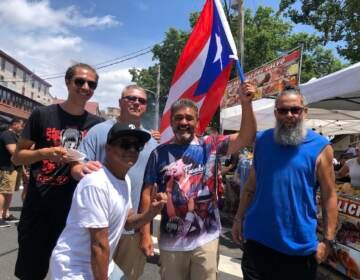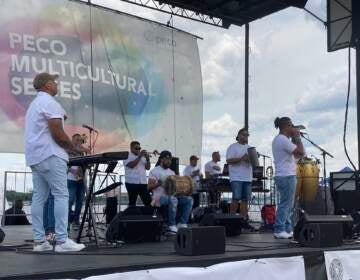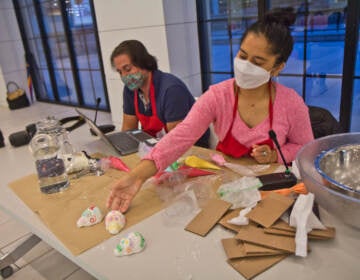Wind down Philly’s epic election week with a bittersweet Día de los Muertos livestream
Fleisher Art Memorial’s Día de los Muertos celebration goes virtual, but “still carries the spirit.”
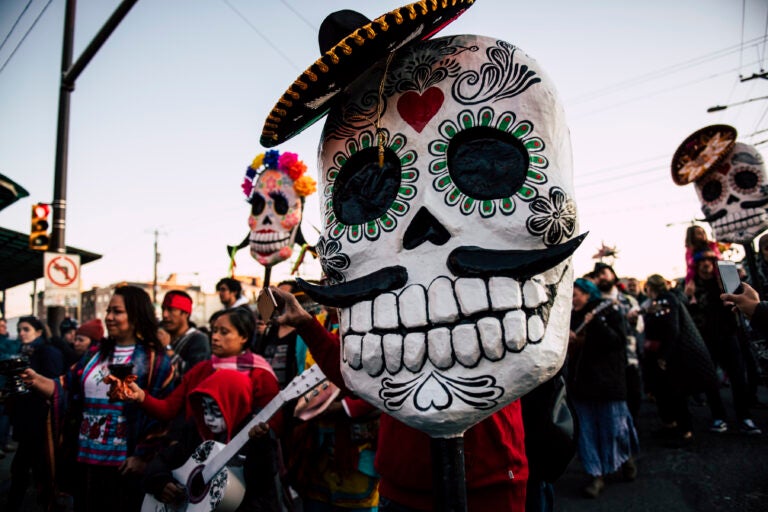
The Día de los Muertos procession in 2019. (Photo by Justin Mayer/Fleisher Art Memorial)
Like most other major events in 2020, Fleisher Art Memorial’s Día de los Muertos procession had to be reimagined to reflect our new reality.
The annual celebration, hosted by Fleisher Art Memorial and organized by the Latino-led group, La Calaca Flaca, will broadcast through Facebook Live on Saturday, Nov. 7 at 3 p.m. (after the pandemic, and then a rainstorm last weekend, disrupted the annual rite). The colorful celebration of life will be filmed by PhillyCAM and streamed as a virtual space of remembrance, to honor the dead, celebrate life, and be in community — even if we’re physically apart.
‘A solitary procession’ with streaming
“We decided to define it as a solitary procession, as an act of care for ourselves and the audience that will join us via live broadcasting,” said lead artist José Ortiz Pagan. “It embraces our current reality.”
For this year’s celebration, instead of the usual ofrenda or altar hosted inside of Fleisher’s sanctuary, it’s being offered to the city, said Pagan. The procession will walk towards four community altars at four “cardinal points” across the city: East, West, South, and North. A few members of the Calaca Flaca committee will walk together, wearing masks and following social-distancing guidelines. The group has asked community members to join via online streaming via Facebook Live and PhillyCAM, the city’s public access station, rather than in person.
“This format allowed us to invite four altaristas, friends, and artists to host the procession as it walks through South Philadelphia, Center City as well as North Philadelphia,” said Pagan. “Each selected artist comes with a different background and approach.”
Gerard Silva, the exhibitions and special projects manager at Fleisher in charge of the Day of the Dead event, said that the event will reflect “a difficult year for [the] community.
“At the same time, after an amazing turnout last year, we knew that canceling this important Latinx event was not an option,” he said. “It was crucial for us to not only proceed with the event for the large Mexican community in our area but also to be inclusive, knowing that the pandemic and the general sentiment towards politics was affecting all of us.”
It was important to include members of other communities who also celebrate the dead in similar ways and spotlight local organizations that were making a big difference to the Latino community, Silva added.
South Alter
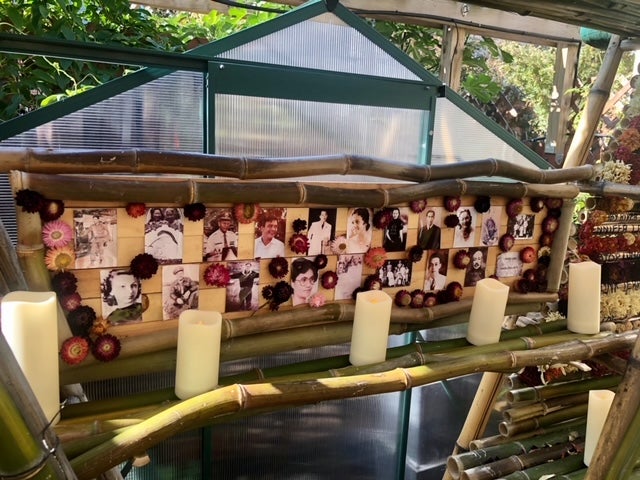
This altar is located at Fleisher Art Memorial and is part of the opening ceremony, created by Omar Buenaventura and Nick Uy of Bahay215. The altar is in partnership with Puentes de Salud, a clinic and health and wellness center that has been critical to treating patients affected by the pandemic in South Philly.
Bahay215 is a collective that “cultivates spaces connecting our communities and other diasporas through Filipinx practices.”
Buenaventura and Uy, both from the Philippines, created their altar from locally sourced bamboo, plants and flowers.
“Our altar will invite us all to honor every death with the same care that we honor our own ancestors, while shining a light on ongoing injustices in the Philippines and in the US,” said Buenaventura and Uy in an email.
“On El Día de Los Muertos, we will sweep the altar and feed ourselves, our ancestors and the people and spirits processing, with warming, sweet, and sticky foods made with life-sustaining rice and tea made from garden herbs and flowers,” said the pair.
They will also participate in a tradition practiced by many Filipinx of Chinese heritage and light funeral money for their ancestors.
“Their altar will serve as a platform to celebrate ancestors, victims of the Philippines’ regime, as well as a space to honor everyone through culinary culture that has been at the core of their recent projects,” added Pagan, the lead artist of this year’s event.
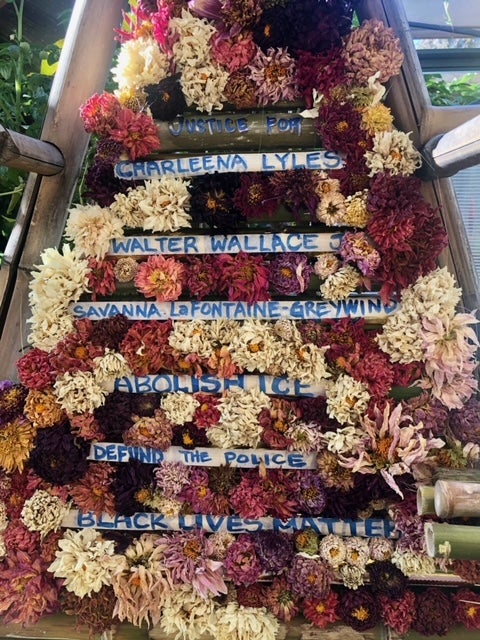
East Alter
Ivonne Pinto-García, an activist, artist and native of Puebla, Mexico is hosting the most traditional community altar in Jefferson Square with Juntos, a community-led, Latinx immigrant organization based in South Philadelphia.
“For us it is an honor to be able to share a bit of our traditions with all our brothers and sisters, who like us, have spent a very difficult and painful year,” said Pinto. “But nonetheless, here we are — all united to have a little joy, love and peace.”
Pinto’s altar will hold a sacred space for those who are no longer with us, particularly from the Southeast part of the city, said Pagan.
West Alter
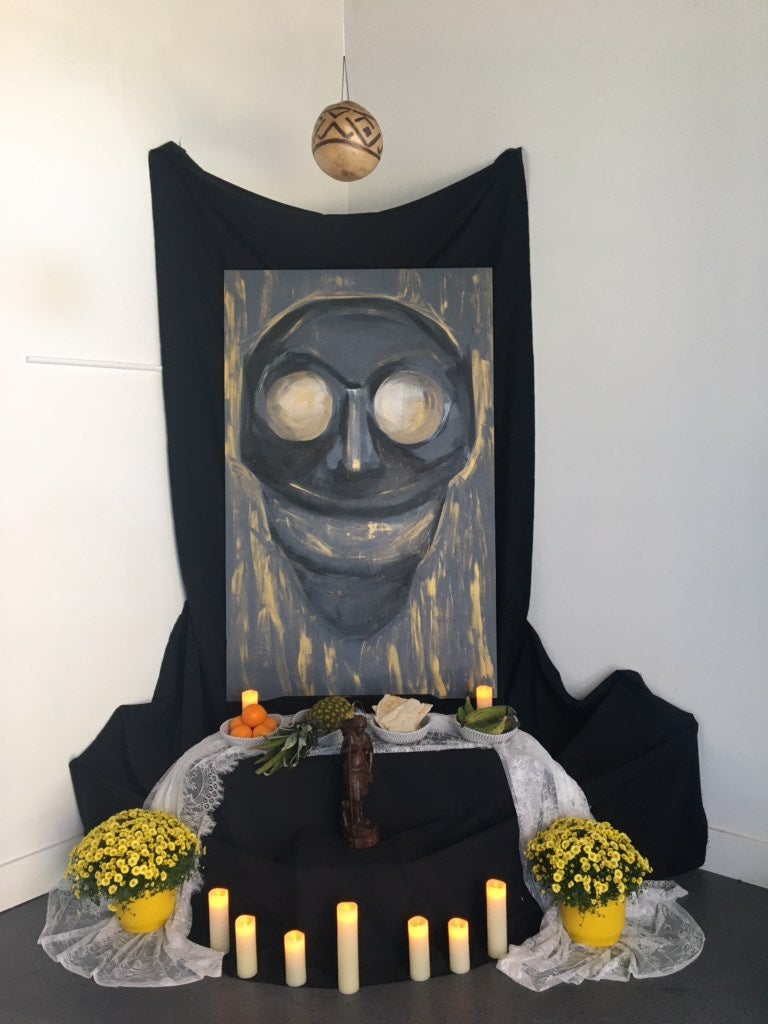
Priscilla Bell is an artist from North Philadelphia — her community altar is at the Brandywine Workshop and Archives.
Bell’s altar will stray away from the typical practices found throughout Mexico, instead using Taíno and Yoruba traditions.
“I seek guidance from both my Indigenous Caribbean heritages as well my African heritages, as both reside well comfortably within me and are in complete partnership and solidarity within my spirit,” said Bell.
“To represent all my ancestors, I have offered plantains from Africa, casabe bread and pineapple from the Caribbean, and the smells of bay leaf from the Mediterranean,” said Bell.
“Through her altar, Priscilla is honoring our first peoples, in particular her Taíno Arawak ancestry and the related spirits to this procession,” said lead artist Pagan. “She is installing her altar at Brandywine Workshop and Archives, one of the most important printmaking institutions in the country that has been notorious for bringing together many cultures and artists from all walks of life via printmaking.”
North Alter
The last stop for the procession will be an altar by muralist Cesar Viveros at the César Andreu Iglesias Community Garden in Norris Square.
This specific portion of the procession won’t be happening live on Saturday, but was in fact pre-recorded due to distance from other locations.
In addition to honoring his late partner who passed away two years ago, Viveros is also holding space for his Aztec ancestors and heritage, said Pagan.
“Cesar is installing his altar at the Iglesias Garden within the Fairhill community in North Philadelphia, a predominantly Puerto Rican community that also has been impacted by an unprecedented rate of gentrification in the city, just like their community garden, that has become a stronghold against developers,” Pagan said. “This altar not only honors our loved ones, but also honors their resiliency during these challenging times.”
A celebration that ‘still carries the spirit’
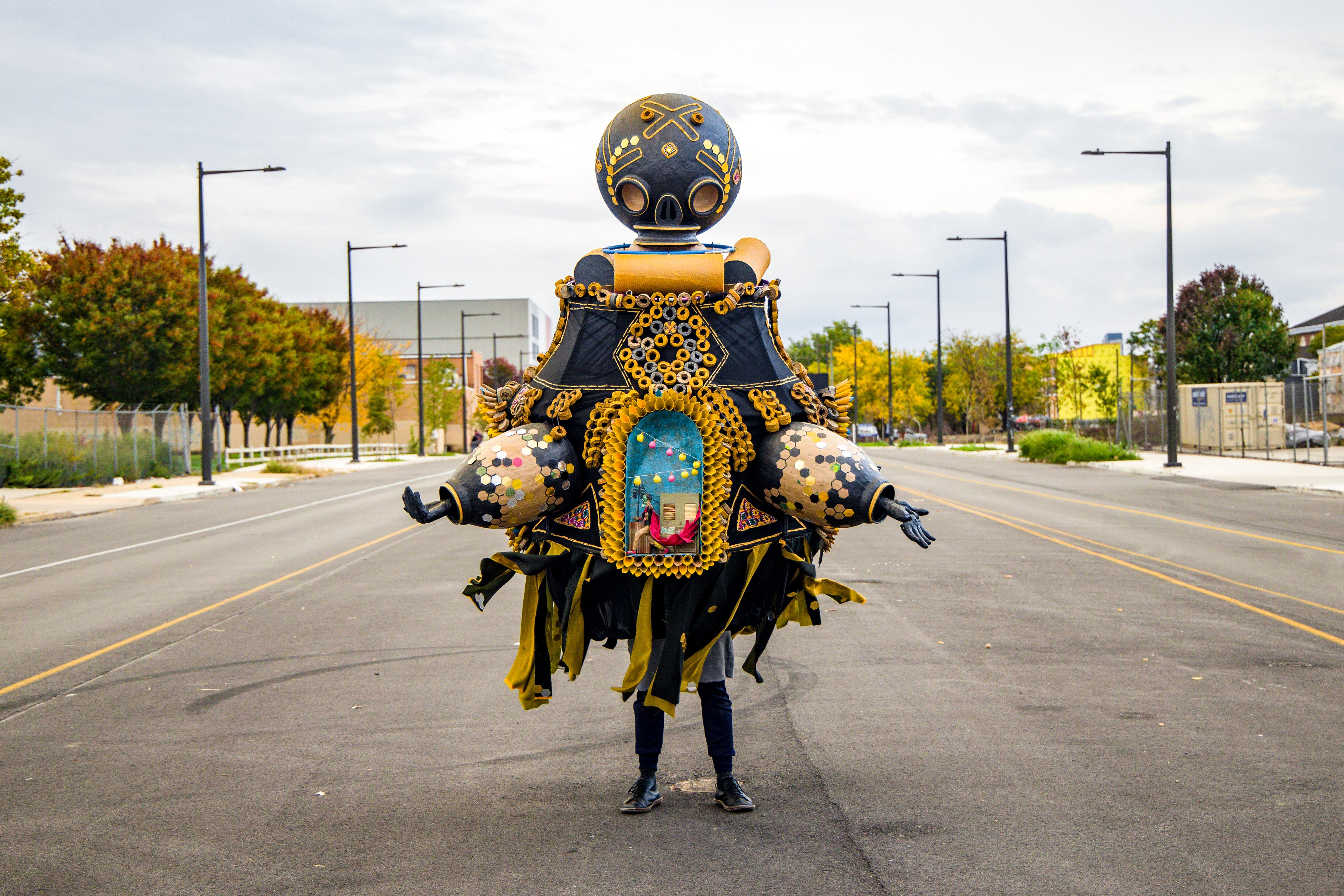
Although this year’s celebration will not be the same experience as years prior, lead artist Pagan says that the procession will still feature elements that are at the core of the holiday: music and the large-scale ceremonial Vinculo suit.
“The ‘Vinculo’ suit itself is the culmination of many things in my life as an artist, as well as the beginning of a new process that exists in a larger sense of communal manifestation,” said Pagan.
“The suit pays homage to our loved ones in a year that has had little space for introspection,” Pagan said. It’s also sectioned in four, to represent four directions and themes: A child walking symbolizing migration and a new beginning; a panther protecting an ancestor, representing solidarity with Black lives; a solitary patient, based on a story of a man with coronavirus in Elmhurst, Queens and finally, a burnt paradise to illustrate the mistreatment of the planet.
Pagan will be visiting the different altars while wearing the suit.
‘A sense of community’
There is no doubt that this year’s Día de los Muertos celebration will be different than other years. It is a year shaped by troubling economic times, a pandemic and great loss across many communities.
Members of La Calaca Flaca don’t want to shy away from that — they want to create a time and space to reflect on it.
“It is our intent and hope that people will know that we are uniting in their grief, that we are with them when they have lost a beloved one due to the pandemic. It is our hope that the Mexican community in particular, will see that this is not a celebratory event as it has been for the last eight years at Fleisher,” said member and community leader Leticia Roe Nixon.
Tamara Jimenez, another member of the La Calaca Flaca, agreed. “A lot of people cannot be physically present to say goodbye to their loved ones who have died,” she said.
“More than ever we needed people to feel a sense of community, of togetherness.”

Subscribe to PlanPhilly
WHYY is your source for fact-based, in-depth journalism and information. As a nonprofit organization, we rely on financial support from readers like you. Please give today.




